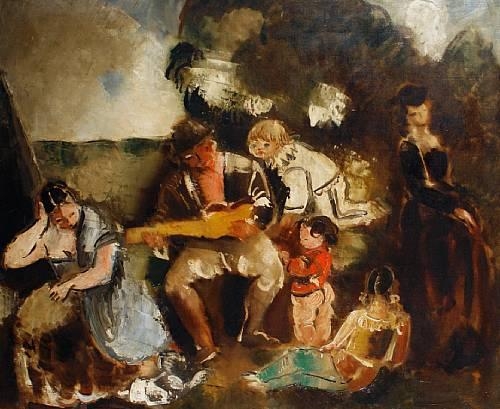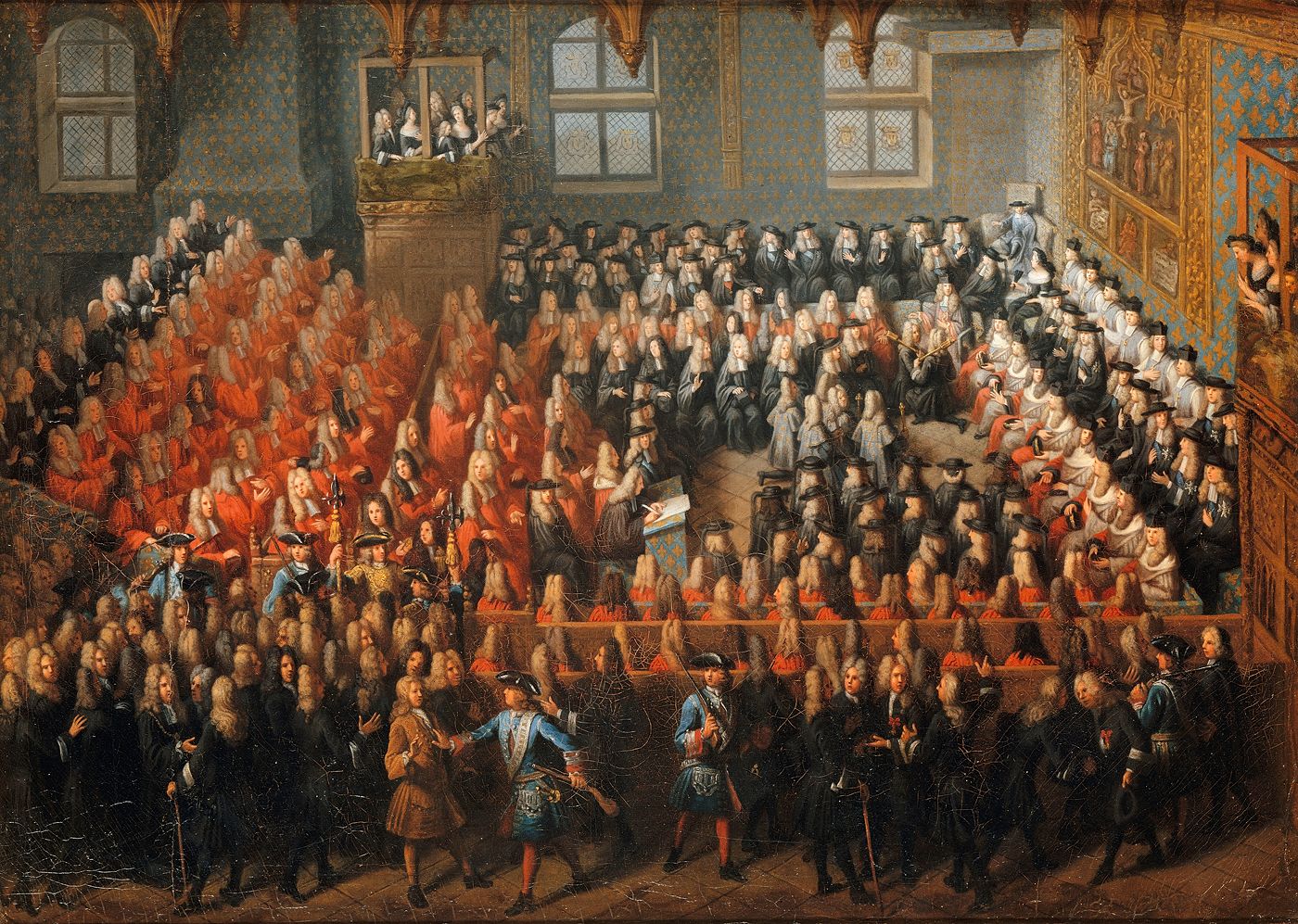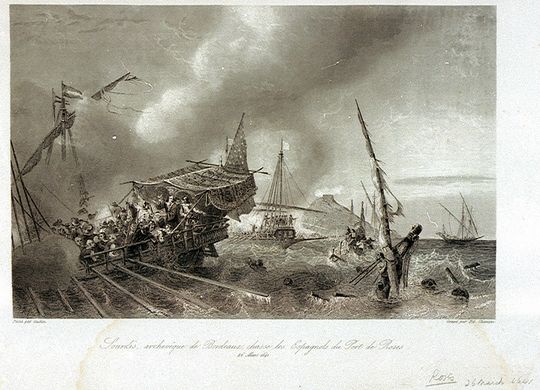|
Bernard De Nogaret De La Valette D'Épernon
Bernard de Nogaret de La Valette (1592 – 25 July 1661) was Duke of Épernon and a French general, the son of Jean Louis de Nogaret de La Valette and Marguerite de Foix-Candale, granddaughter of the constable of Montmorency family, Montmorency. Through his mother's line, Bernard could also claim the English title of Earl of Kendal, originally granted to his ancestor John de Foix, 1st Earl of Kendal, John de Foix in 1446. Life Bernard was born in 1592 in Angoulême. In 1622, he married Gabrielle-Angélique de Verneuil, legitimised daughter of Henri IV and the Catherine Henriette de Balzac d'Entragues, Marquise de Verneuil, with whom he had a son, Louis-Charles-Gaston de Candale, and a daughter, Anne-Louise-Christine de Foix de La Valette d'Épernon. Gabrielle-Angélique died in 1627 (some say Bernard poisoned her) and in 1634 he married Marie Ducambaut, a niece of Cardinal Richelieu. It was not a happy marriage, as Bernard later conceived a lifelong passion for a middle-class w ... [...More Info...] [...Related Items...] OR: [Wikipedia] [Google] [Baidu] [Amazon] |
Bernard De Foix De La Valette Duke Of Épernon 1650
Bernard (''Bernhard'') is a French and West Germanic masculine given name. It has West Germanic origin and is also a surname. The name is attested from at least the 9th century. West Germanic ''Bernhard'' is composed from the two elements ''bern'' "bear" and ''hard'' "brave, hardy". Its native Old English cognate was ''Beornheard'', which was replaced or merged with the French form ''Bernard'' that was brought to England after the Norman Conquest. The name ''Bernhard'' was notably popular among Old Frisian speakers. Its wider use was popularized due to Saint Bernhard of Clairvaux (canonized in 1174). In Ireland, the name was an anglicized form of Brian. Geographical distribution Bernard is the second most common surname in France. As of 2014, 42.2% of all known bearers of the surname ''Bernard'' were residents of France (frequency 1:392), 12.5% of the United States (1:7,203), 7.0% of Haiti (1:382), 6.6% of Tanzania (1:1,961), 4.8% of Canada (1:1,896), 3.6% of Nigeria (1:12,221) ... [...More Info...] [...Related Items...] OR: [Wikipedia] [Google] [Baidu] [Amazon] |
Croquant Rebellions
The croquant rebellions ("Jacquerie des croquants" in French) were several peasant revolts that erupted in Limousin, Quercy, and Perigord (France) and that extended through the southeast of the country in the latter part of the 16th and beginning of the 17th centuries. They were caused by an increase in the estate and nobility taxation during a period of great misery among the peasantry after years of war, and fall within the category of the French religion wars. The croquants supported King Henry IV of France against the Catholic League and the nobles who participated in it. The religious motives were, however, marginal and the Croquant uprisings were, above all, rebellions against taxation. There were three of these rebellions, which took place in the years 1594, 1624, and 1637. The first finished with the reduction of taxes, the second with Donat and Barran, the leaders of the uprising, being executed, and the third finally conceding a general amnesty. The 1594/95 u ... [...More Info...] [...Related Items...] OR: [Wikipedia] [Google] [Baidu] [Amazon] |
Jean Parisot De La Valette
Fra' Jean "Parisot" de (la) Valette (; – 21 August 1568) was a French nobleman and 49th Grand Master of the Order of Malta, from 21 August 1557 to his death in 1568. As a Knight Hospitaller, joining the order in the , he fought with distinction against the Turks at Rhodes. As Grand Master, Valette became the Order's hero and most illustrious leader, commanding the resistance against the Ottomans at the Great Siege of Malta in 1565, sometimes regarded as one of the greatest sieges of all time. The foundation stone of Valletta was laid by Grandmaster La Valette in 1566. He did not live to see Valletta completed, as he died in 1568 and was succeeded by Grandmaster Pierre de Monte. Early life He was born into the noble La Valette family in Quercy, South-western France, which had been an important family in France for many generations, various members having participated in the Crusades. Jean Parisot's grandfather, Bernard de La Valette, was a Knight and King's Orderly, and his ... [...More Info...] [...Related Items...] OR: [Wikipedia] [Google] [Baidu] [Amazon] |
Guillaume De Nogaret
Guillaume de Nogaret (c. 1260 April 1313) was a French statesman, councilor and keeper of the seal to Philip IV of France. Early life Nogaret was born in Saint-Félix-Lauragais, Haute-Garonne. The family held a small ancestral property of servile origin at Nogaret, near Saint-Félix-de-Caraman (today's Saint-Félix-Lauragais), from which it took its name. In 1291 Guillaume was professor of jurisprudence at the university of Montpellier, and in 1296 he became a member of the Curia Regis at Paris. From 1306, he was a seigneur of Marsillargues, Calvisson, Aujargues and Congénies in Languedoc. Councilor to Philip IV His name is mainly connected with the quarrel between Philip IV and Pope Boniface VIII. In 1300 he was sent with an embassy to Boniface, of which he left a picturesque and highly coloured account. His influence over the king dates from February 1303, when he persuaded Philip to consent to the bold plan of seizing Boniface and bringing him forcibly from I ... [...More Info...] [...Related Items...] OR: [Wikipedia] [Google] [Baidu] [Amazon] |
Carmelites
The Order of the Brothers of the Blessed Virgin Mary of Mount Carmel (; abbreviated OCarm), known as the Carmelites or sometimes by synecdoche known simply as Carmel, is a mendicant order in the Catholic Church for both men and women. Historical records about its origin remain uncertain; it was probably founded in the 12th century on Mount Carmel in the Holy Land. Names The Order of the Brothers of the Blessed Virgin Mary of Mount Carmel are also known simply as the Carmelites or the Carmelite Order. To differentiate themselves from the Discalced Carmelites (founded in 1562), who grew out of the older order but today have more members, the original Carmelites are sometimes known as the Carmelites of the Ancient Observance and very rarely the Calced Carmelites ( discalced being a reference to some religious orders going barefoot or wearing sandals instead of shoes). History Historical records about its origin remain uncertain, but the order was probably founded in the 12th c ... [...More Info...] [...Related Items...] OR: [Wikipedia] [Google] [Baidu] [Amazon] |
Molière
Jean-Baptiste Poquelin (; 15 January 1622 (baptised) – 17 February 1673), known by his stage name Molière (, ; ), was a French playwright, actor, and poet, widely regarded as one of the great writers in the French language and world literature. His extant works include comedies, farces, Tragicomedy, tragicomedies, comédie-ballets, and more. His plays have been translated into every major living language and are performed at the Comédie-Française more often than those of any other playwright today. His influence is such that the French language is often referred to as the "language of Molière". Born into a prosperous family and having studied at the Collège de Clermont (now Lycée Louis-le-Grand), Molière was well suited to begin a life in the theatre. Thirteen years as an itinerant actor helped him polish his comedic abilities while he began writing, combining Commedia dell'arte elements with the more refined French comedy. Through the patronage of aristocrats inclu ... [...More Info...] [...Related Items...] OR: [Wikipedia] [Google] [Baidu] [Amazon] |
Charles Dufresne (actor)
Georges-Charles Dufresne (23 November 1876, Millemont - 8 August 1938, La Seyne-sur-Mer) was a French painter, engraver, sculptor and decorator. Biography He came from a family of sailors and fishermen that originated in Granville. He left school to study engraving, then went to Paris, where he enrolled at the École nationale supérieure des Beaux-Arts and found a position in the workshops of Hubert Ponscarme. Later, he became an assistant to the sculptor and medalist, Alexandre Charpentier. He was more attracted to painting, however, and began making pastels at Café-chantants and circuses and guinguettes, in the manner of Toulouse-Lautrec. His first exhibition came at the Salon of the Société Nationale des Beaux-Arts in 1903. Following that, he and his close friend, the American-born engraver , went on an extended trip to Italy and stayed at the Villa Médicis. In 1908, he spent some time working in Brittany at the invitation of . In 1910, he was one of the winners ... [...More Info...] [...Related Items...] OR: [Wikipedia] [Google] [Baidu] [Amazon] |
Parlement Of Paris
The ''Parlement'' of Paris () was the oldest ''parlement'' in the Kingdom of France, formed in the 14th century. Parlements were judicial, rather than legislative, bodies and were composed of magistrates. Though not representative bodies in the present sense of the word, they had procedures and authorities that could delay the otherwise unchecked power of the King. Because of its location and history, the Parlement of Paris was the most significant. The Parlement of Paris was established under Philip IV of France in 1302. The Parlement of Paris would hold sessions inside the medieval royal palace on the Île de la Cité, which today is the site of the Paris Hall of Justice. History In 1589, Paris was effectively in the hands of the Catholic League. To escape, Henry IV of France summoned the parlement of Paris to meet at Tours, but only a small faction of its parliamentarians accepted the summons. (Henry also held a parliament at Châlons, a town remaining faithful to the king ... [...More Info...] [...Related Items...] OR: [Wikipedia] [Google] [Baidu] [Amazon] |
Order Of The Garter
The Most Noble Order of the Garter is an order of chivalry founded by Edward III of England in 1348. The most senior order of knighthood in the Orders, decorations, and medals of the United Kingdom, British honours system, it is outranked in United Kingdom order of precedence, precedence only by the Award, decorations of the Victoria Cross and the George Cross. The Order of the Garter is dedicated to the image and Coat of arms, arms of Saint George, England's patron saint. Appointments are at the Monarchy of the United Kingdom, Sovereign's sole discretion, typically made in recognition of national contribution, service to the Crown, or for distinguished personal service to the Monarch. Membership of the order is limited to the sovereign, the Prince of Wales, and no more than 24 living members, or Companions. The order also includes Supernumerary Knights and Ladies (e.g., members of the British royal family and foreign monarchs). The order's emblem is a garter (stockings), gar ... [...More Info...] [...Related Items...] OR: [Wikipedia] [Google] [Baidu] [Amazon] |
Bayonne
Bayonne () is a city in southwestern France near the France–Spain border, Spanish border. It is a communes of France, commune and one of two subprefectures in France, subprefectures in the Pyrénées-Atlantiques departments of France, department, in the Nouvelle-Aquitaine regions of France, region. Bayonne is located at the confluence of the Nive and Adour Rivers, in the northern part of the cultural region of the Basque Country (greater region), Basque Country. It is the seat of the Communauté d'agglomération du Pays Basque which roughly encompasses the western half of Pyrénées-Atlantiques, including the coastal city of Biarritz. The area also constitutes the southern part of Gascony, where the Aquitaine Basin joins the beginning of the Pre-Pyrenees. Together with nearby Anglet, Biarritz, Saint-Jean-de-Luz and several smaller communes, Bayonne forms an urban area with 273,137 inhabitants in the 2018 census, 51,411 of whom lived in the commune of Bayonne proper. [...More Info...] [...Related Items...] OR: [Wikipedia] [Google] [Baidu] [Amazon] |
Henri De Sourdis
Henri d'Escoubleau de Sourdis, 20 February 1593 to 18 June 1645, was a French naval commander and Archbishop of Bordeaux. Like many churchmen of his day, de Sourdis was a military man as well as a prelate. Appointed Bishop of Maillezais in 1619, he fought in the Thirty Years' War and in 1628 served as commander of the artillery at the Siege of La Rochelle. The next year, 1629, Henri succeeded his brother François de Sourdis as Archbishop of Bordeaux. The succession had been legally arranged several years before and was confirmed by Cardinal Richelieu the day François died. In 1635 Richelieu declared war on Spain (see Franco-Spanish War (1635–1659)). However, the Spanish fleet mobilised more quickly and Spain seized the Lérins Islands in September 1635. In 1635 Henri, Count of Harcourt was put in charge of a large fleet of 25 ships, 6 fire ships and 12 flutes, with orders to drive the Spanish out. According to Jenkins an early difficulty in the French navy was that o ... [...More Info...] [...Related Items...] OR: [Wikipedia] [Google] [Baidu] [Amazon] |





